Paris-Roubaix is the pinnacle of the season for Classics riders.
It’s the pinnacle of the season for tech fans, too, with the Queen of the Classics putting an intense focus on a rider’s equipment – and its ability to withstand the pavé of northern France.
However, where Paris-Roubaix once saw a complete equipment overhaul for riders, the latest aero road bikes, with a switch to wider rubber, have become commonplace on the cobbles.
The race still throws up its fair share of tech quirks, be it Israel-Premier Tech’s switch to a gravel bike for this year’s edition, or the nuances of individual setup from one rider to the next, but it’s no longer the treasure trove of tech it once was.
Over the past decade, we’ve waved goodbye to box-section alloy rims, cyclocross bikes, boutique tyres and now even endurance bikes at Paris-Roubaix.
Here, then, is an ode to the Paris-Roubaix tech oddities of old.
You can't trust carbon
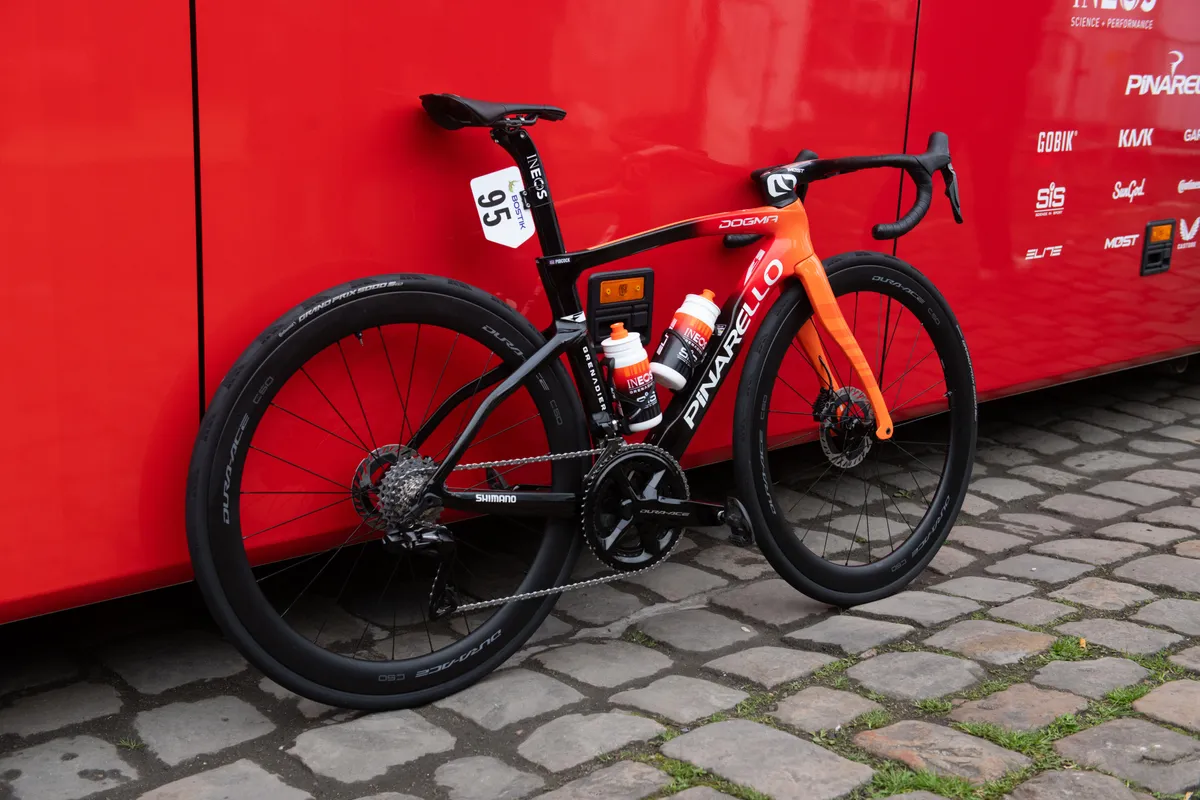
Just as most riders now ride their usual aero bike at Paris-Roubaix, the latest carbon wheels – set up tubeless and typically with a foam liner – are now ubiquitous at Paris-Roubaix.
That wasn’t always the case. While Franco Ballerini became the first rider to win Paris-Roubaix on a carbon frame, the Colnago C40, in 1995, carbon wheels couldn’t be trusted when hitting the rough, irregular cobbles.
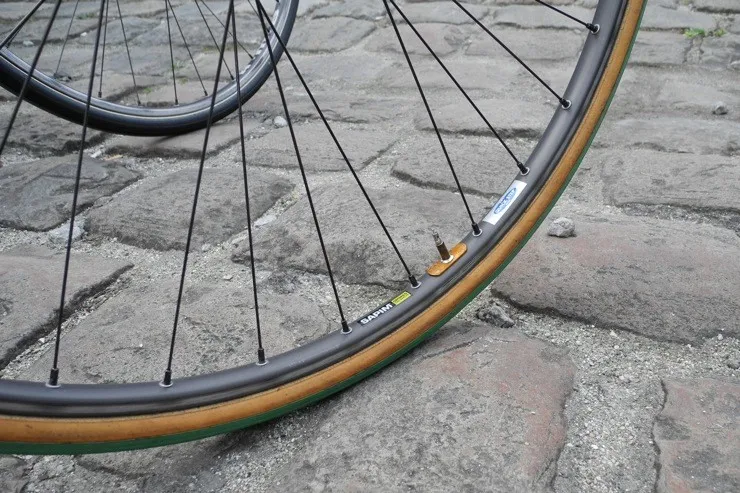
Instead, riders turned to box-section aluminium rims, reinforced with 32 spokes. The Ambrosio Nemesis was the rim of choice for many.
With its hard-anodised finish and double eyelets, the Ambrosio Nemesis was a rim built to withstand punishment.
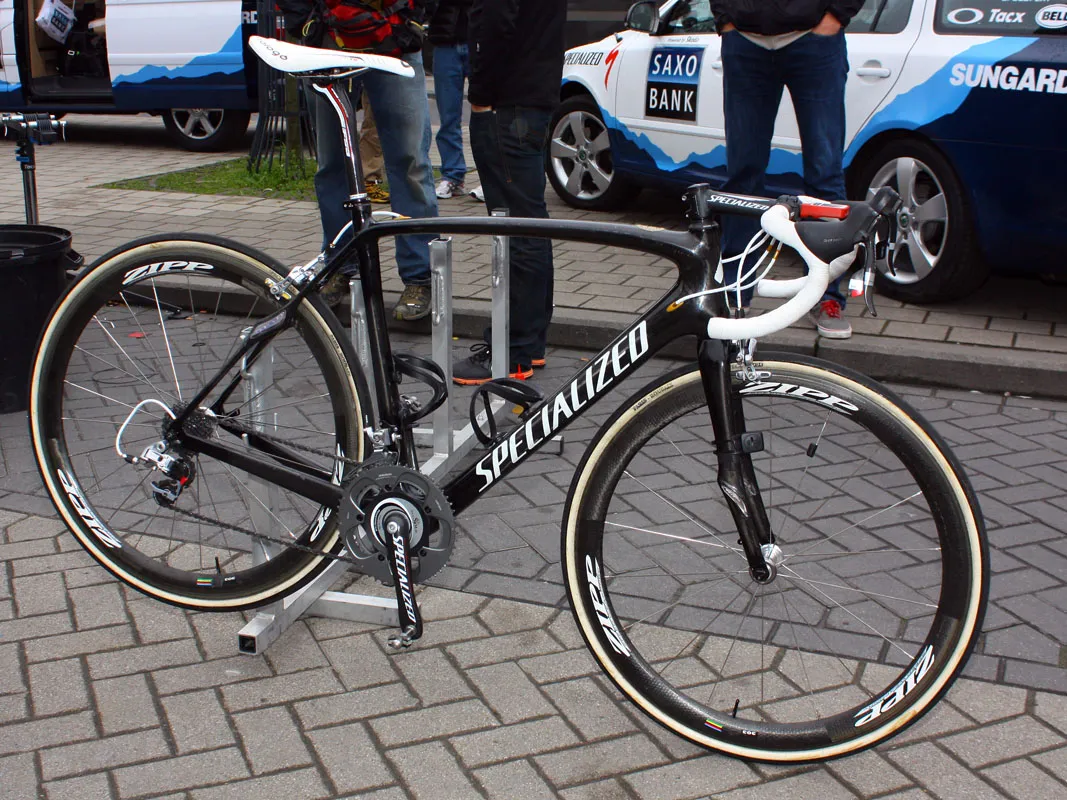
It took until 2010 for Fabian Cancellara to win on a set of carbon wheels, in the form of Zipp’s 303s, and several years beyond Sparatcus’ second Roubaix victory for aluminium wheels to disappear altogether.
Today, it’s carbon all the way.

That extends to handlebars, too.
Aluminium bars used to be common at Paris-Roubaix but with advancements in carbon tech – and the fact that many riders are locked into carbon bars due to ever-increasing bike integration – the 2024 edition was a sea of one-piece carbon cockpits.
Goodbye to endurance bikes
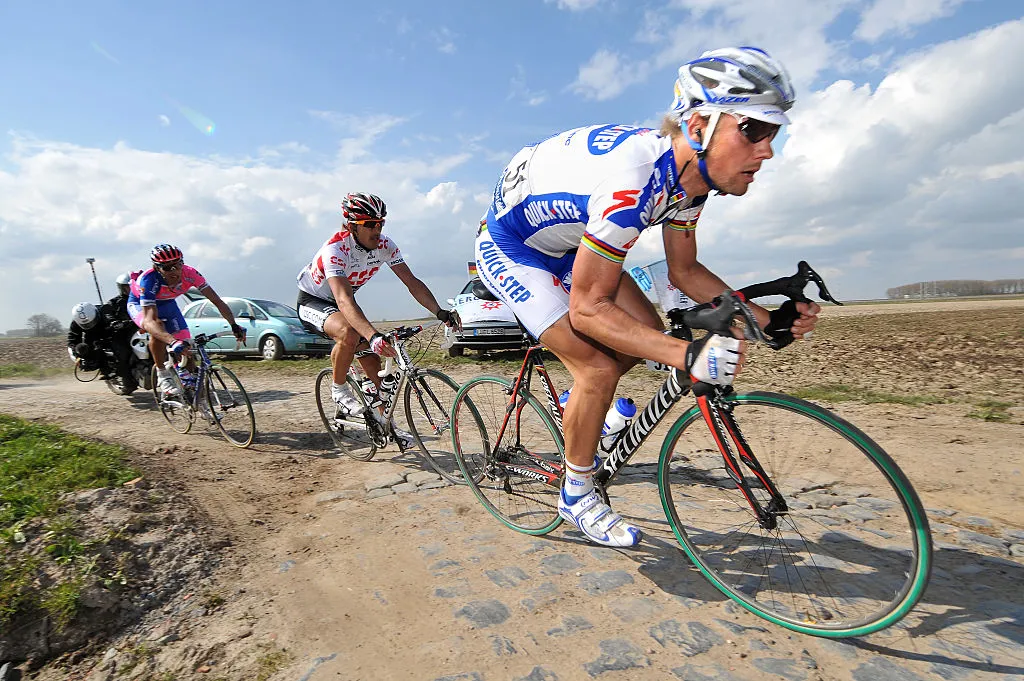
Paris-Roubaix gave name to the first endurance road bike, the Specialized Roubaix, in 2004 – and Tom Boonen won the 2008 edition of the race on the second iteration, the Roubaix SL2.
Boonen ushered in the era of the endurance bike at Paris-Roubaix. The pavé became the pro proving ground for a category of bikes that sought to meet the demands of professional and amateur riders alike.

The Specialized Roubaix, Trek Domane and Cannondale Synapse dominated the race through the 2010s.
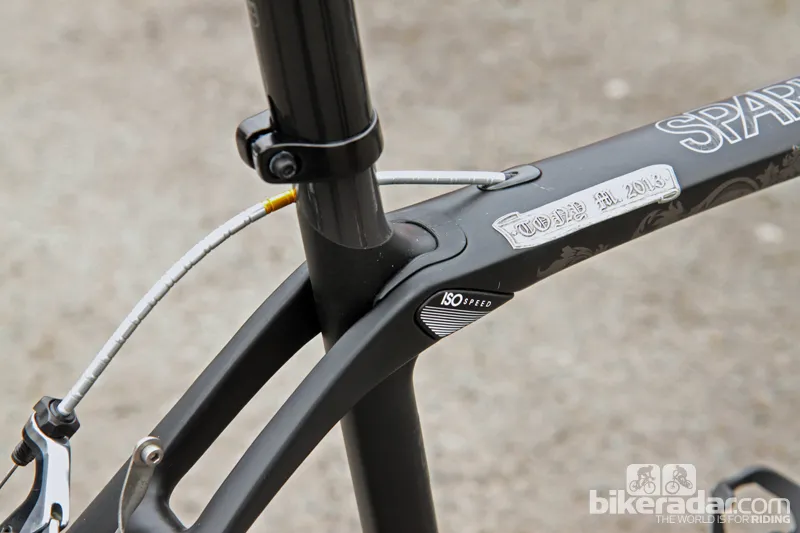
All of these bikes used some kind of wizardry to tame the cobbles, be it the Roubaix’s move from Zertz inserts to Futureshock suspension, Trek’s IsoSpeed decoupler or Cannondale’s radically-shaped SAVE stays and slender 25.4mm-diameter seatpost.
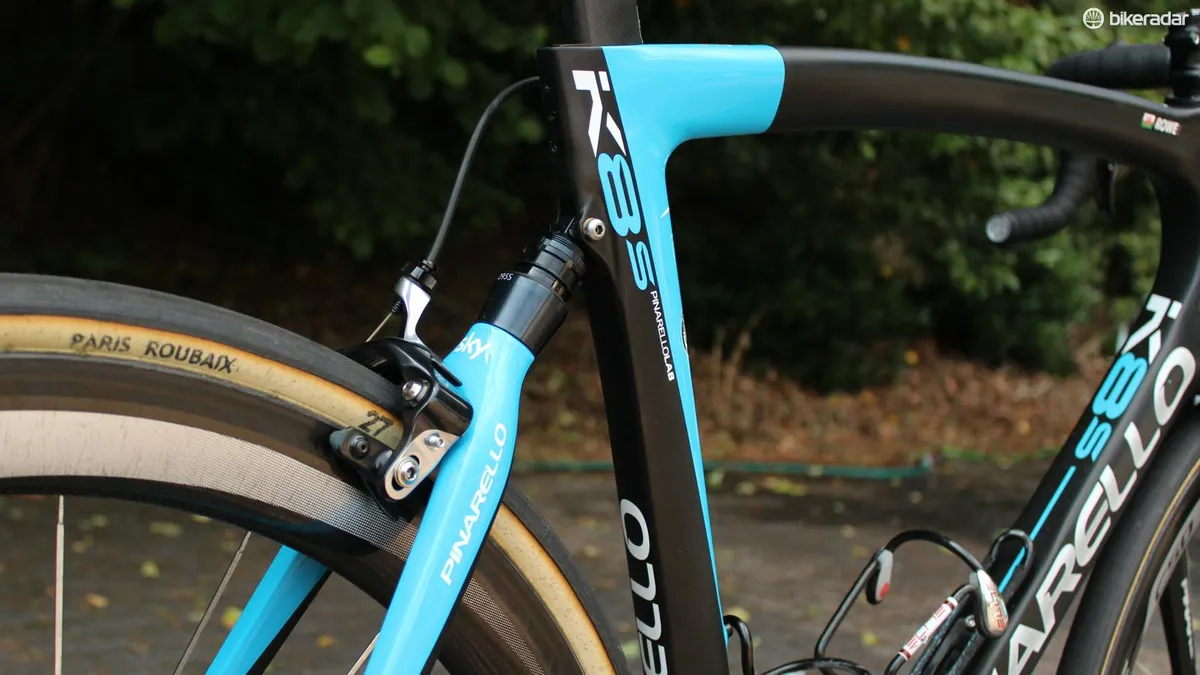
Elsewhere, we saw Pinarello’s shortlived K8-S, with elastomer rear suspension, and even Roubaix-specific race bikes, such as Cervélo's R3 Mud.
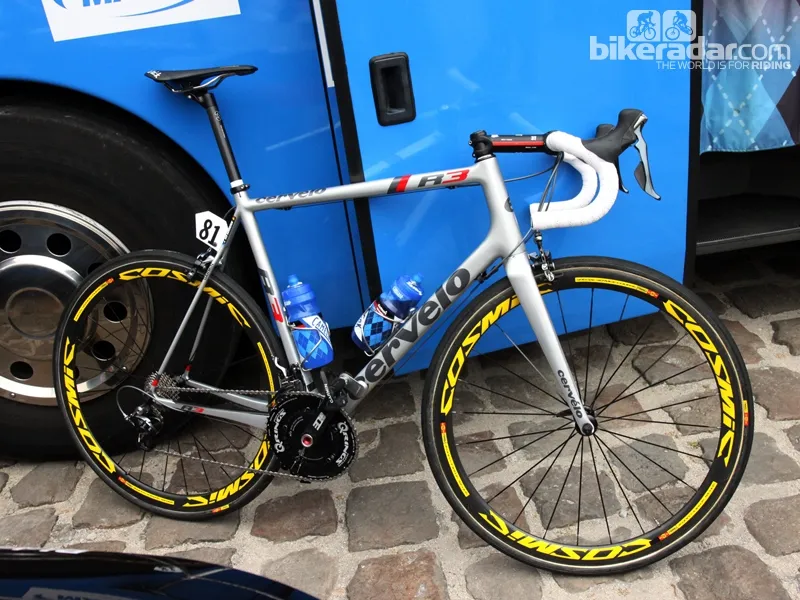
The Mud was adapted from the regular R3 to lengthen the wheelbase and increase tyre clearance.
However, Mat Hayman’s 2016 win on the Scott Foil marked the beginning of the end of the endurance bike at Paris-Roubaix, and the start of the aero era.
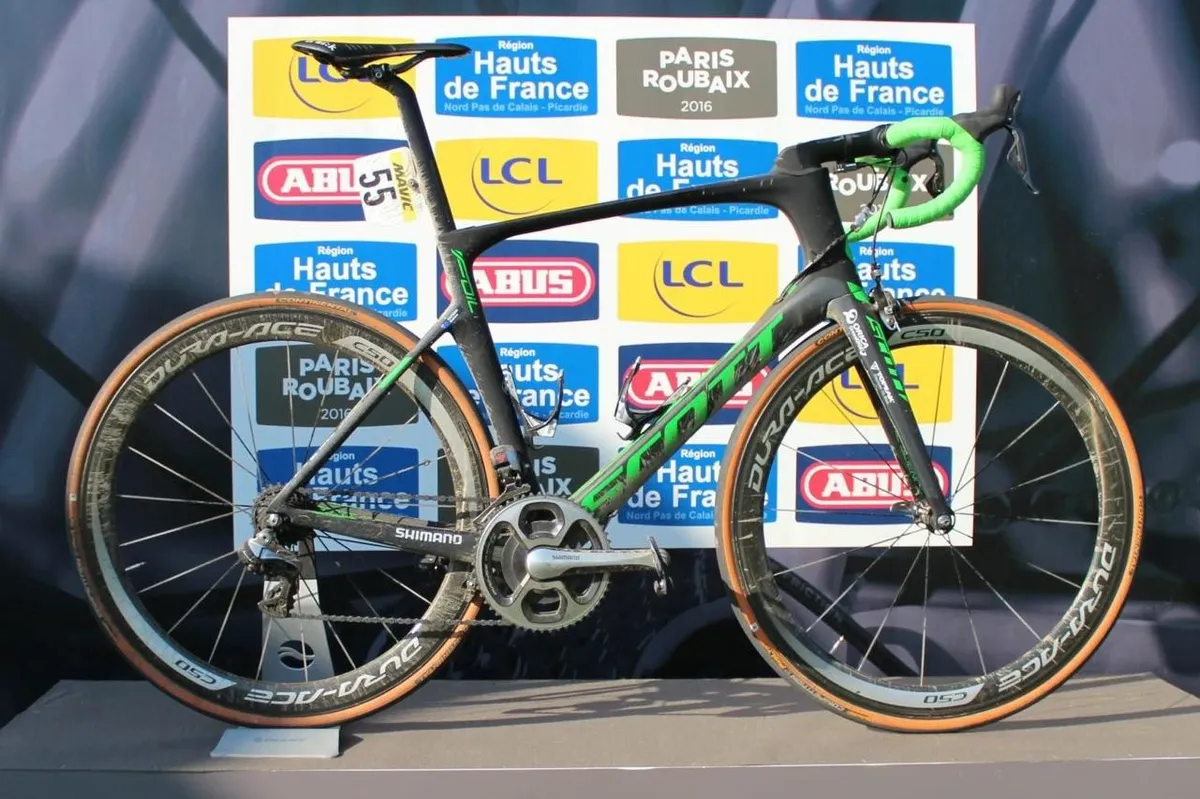
With its sculpted tubes, 28mm tyres and carbon wheels, Hayman’s bike was remarkably similar to his regular race-day ride, with few concessions for the cobbles.
Admittedly, further victories followed for the Specialized Roubaix in 2017 and 2019 but generous tyre clearances on the latest race machines leave the endurance bike out in the cold.
This year, all of Specialized’s sponsored teams took to the start of Paris-Roubaix on the Tarmac SL8.
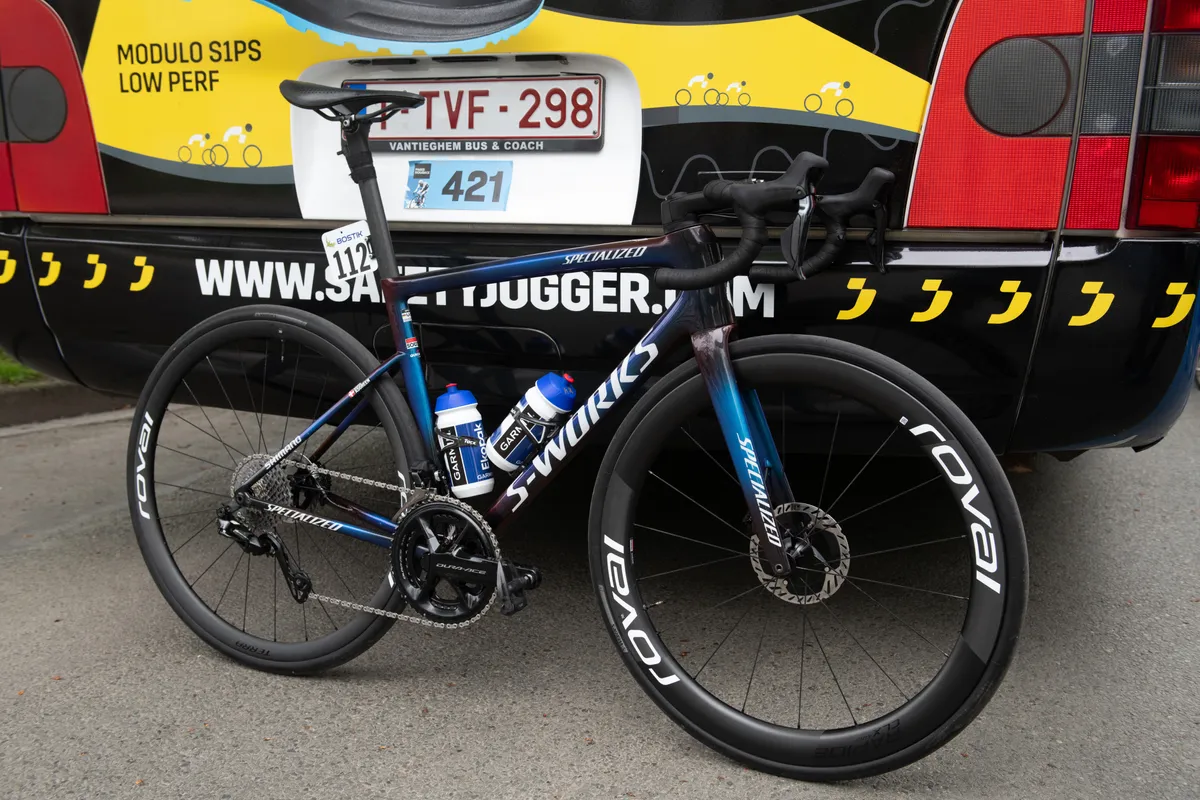
Is Paris-Roubaix even a road race?
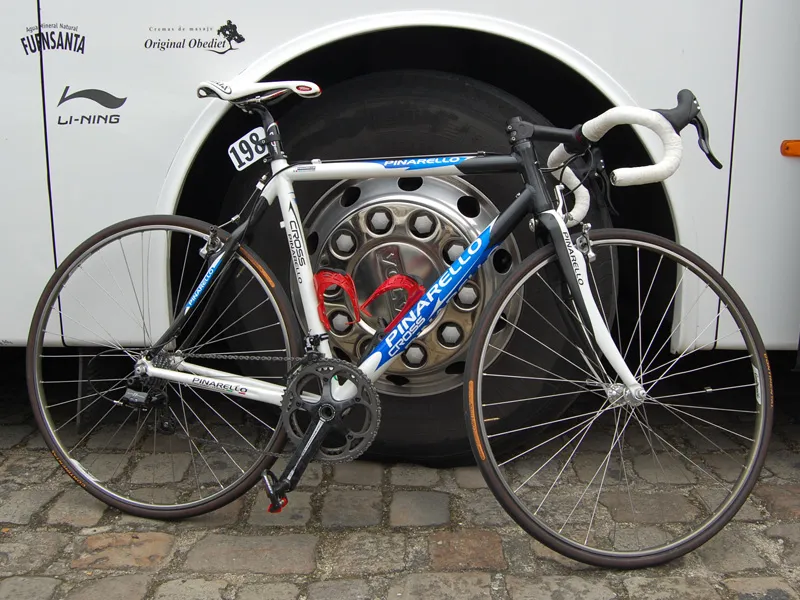
Before endurance bikes caught on, and even for a while after, some riders switched to a cyclocross bike for Paris-Roubaix.
Take the 2009 edition – and this distinctly retro Paris-Roubaix gallery from the early days of BikeRadar. The Milram team used Focus’ new carbon cyclocross bike, while Caisse d’Epargne – now Movistar – used Pinarello’s Cross bike.
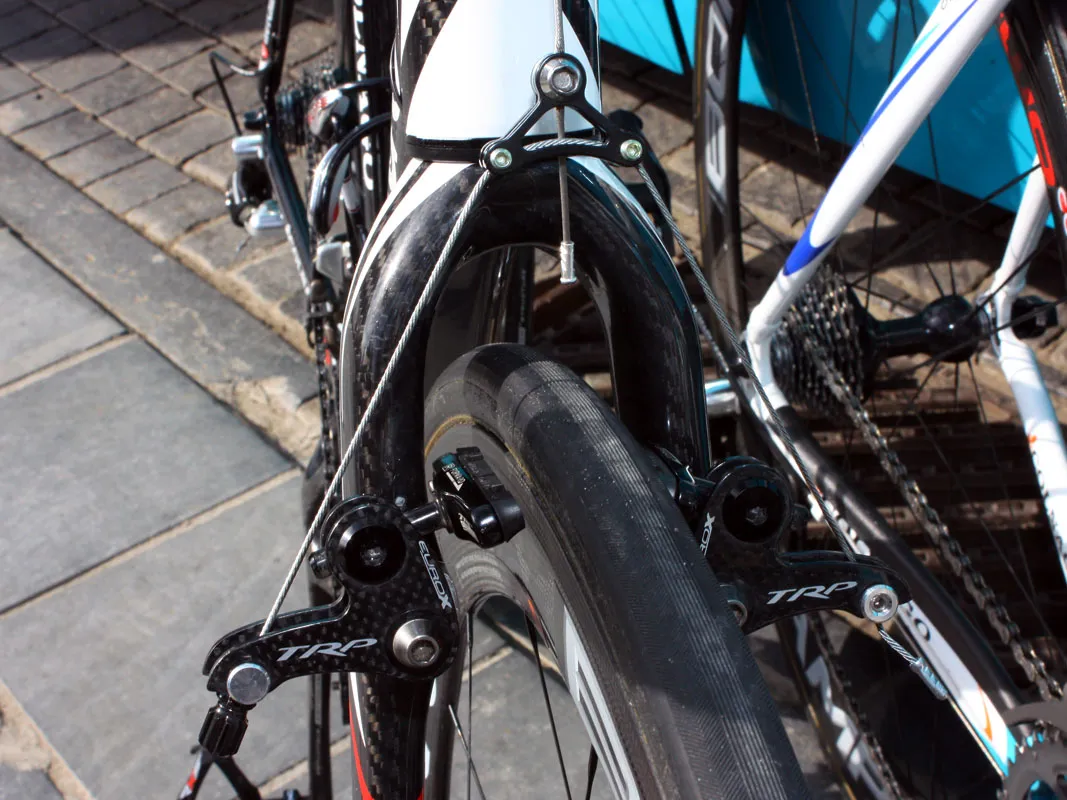
A year later, we saw William Bonnet on the Colnago Cross Prestige, and in 2012, Lars Boom on the Giant TCX Advanced SL.
The reason? Tyre clearance. With disc brakes yet to feature, cyclocross bikes of the era used cantilever brakes to offer the clearance required for 33mm ‘cross tyres.
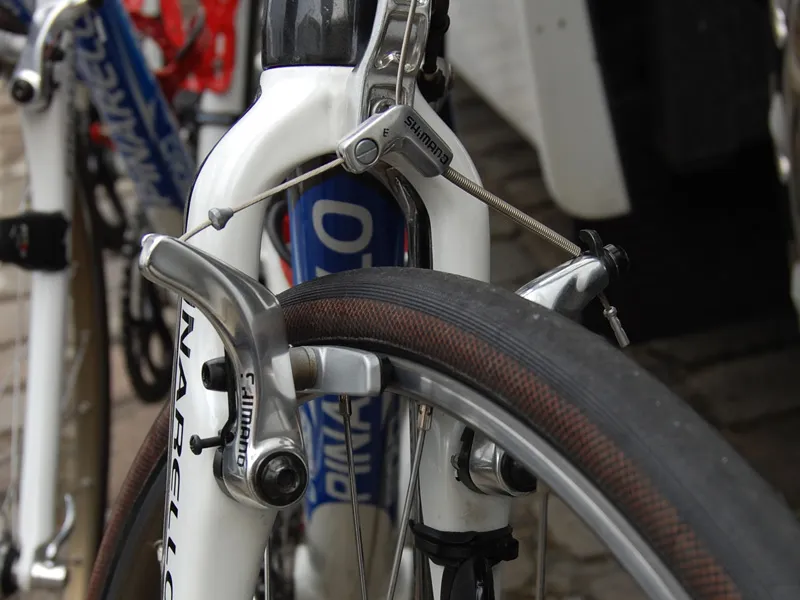
Campagnolo didn’t make a cantilever brake so, despite being sponsored by the Italian brand, Caisse d’Epargne needed to use Shimano stoppers for the race.
While we’re talking about brakes, cross-top levers – another nod to CX tech – have also disappeared from Paris-Roubaix.

These allowed riders to temper their speed without moving their hands from the tops, the preferred position when smashing into the cobbles.
Back to the Pinarello Cross, and the frame was made from TIG-welded aluminium tubes, supplemented by carbon seatstays. The fork used an alloy crown and steerer tube – a far cry from today’s sea of carbon.
The build was also typical of the time, with mechanical gearing (Campagnolo Super Record 11-speed) and box-section aluminium rims.
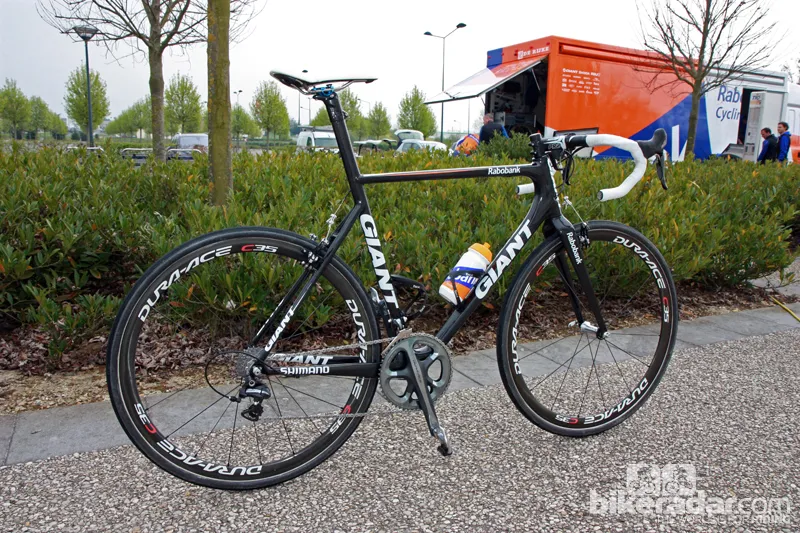
It’s all about the tyres
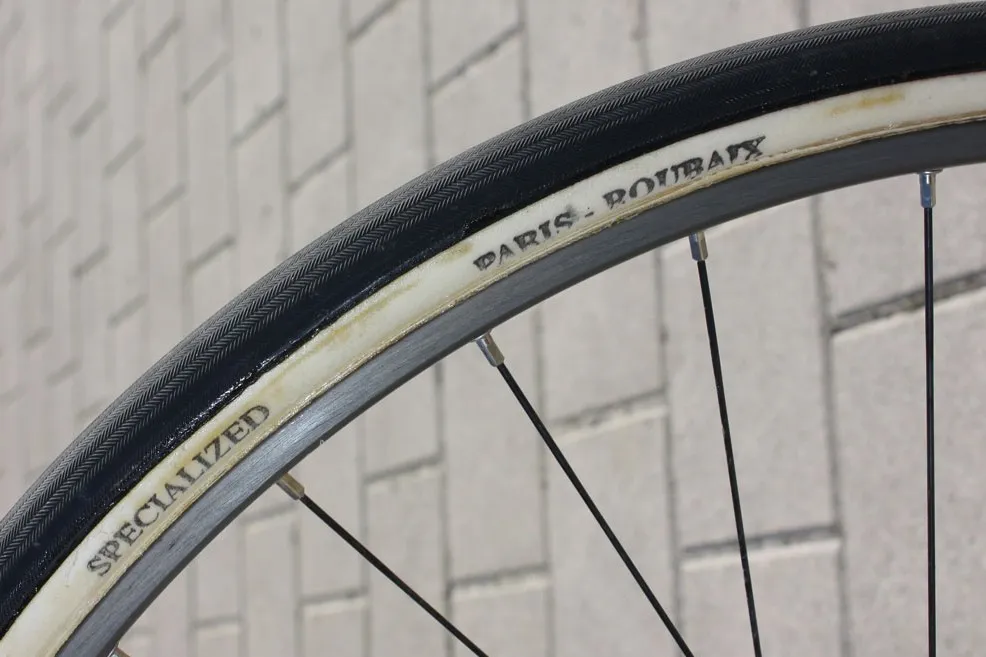
Even if box-section alloy rims, endurance bikes, cross-top levers and cantilever brakes have all disappeared from Paris-Roubaix, one thing hasn’t changed – it’s all about the tyres.
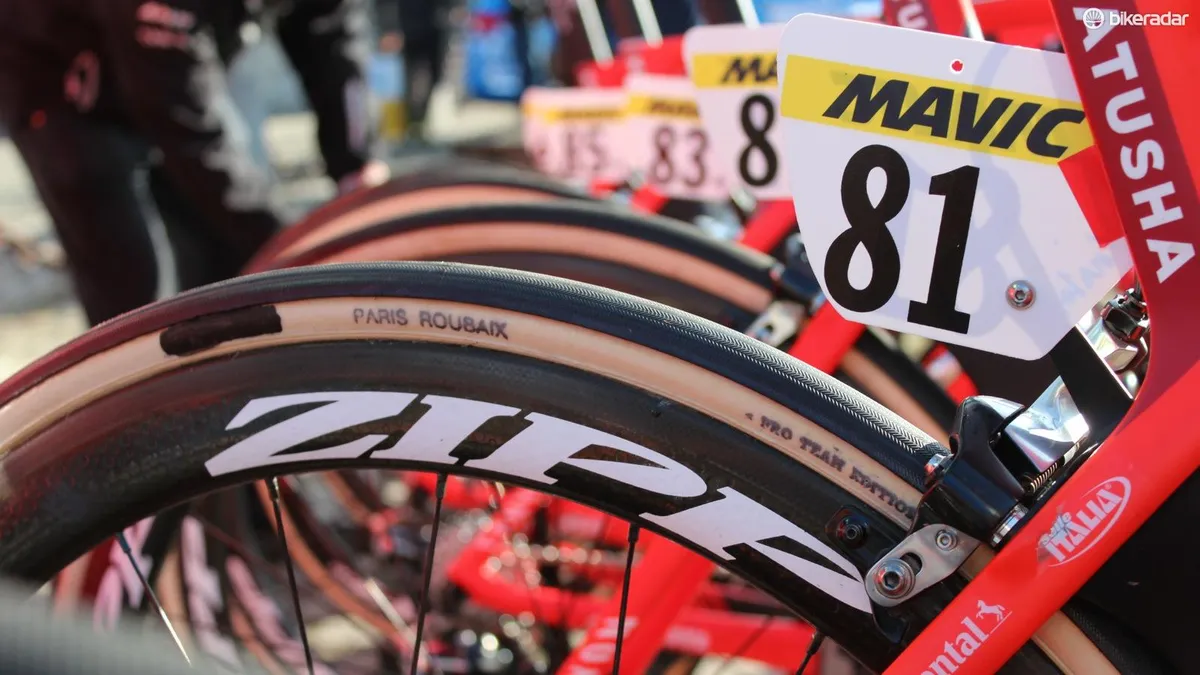
Tyre choice can be the difference between success and failure on the cobbles of northern France. In years past, that meant ripping up sponsorship contracts and making an annual order for specialist tubulars from companies such as Dugast and FMB.
When we visited FMB's artisan workshop in 2012, five of the last six editions of Paris-Roubaix had been won by riders on its tyres.
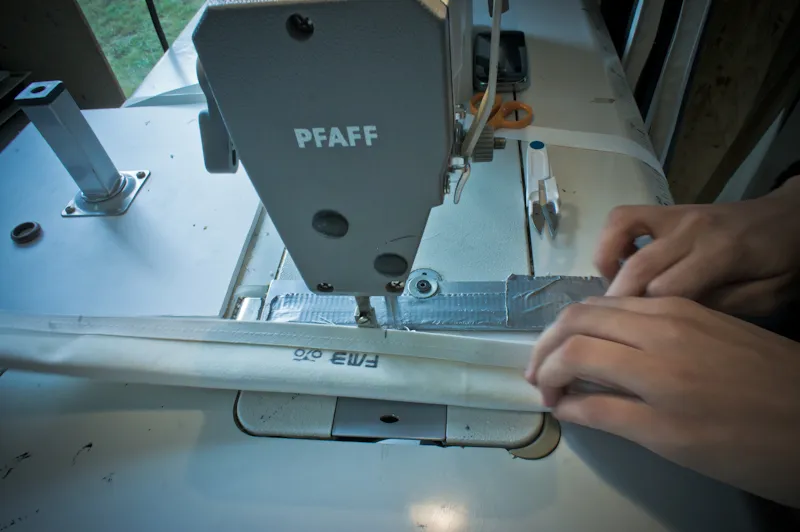
Handmade, and using natural materials such as cotton or silk for the casing, FMB’s tyres had a reputation for a supple ride feel – improving comfort when hitting the cobbles – and for favourable rolling resistance when run at the low pressures required for Paris-Roubaix.
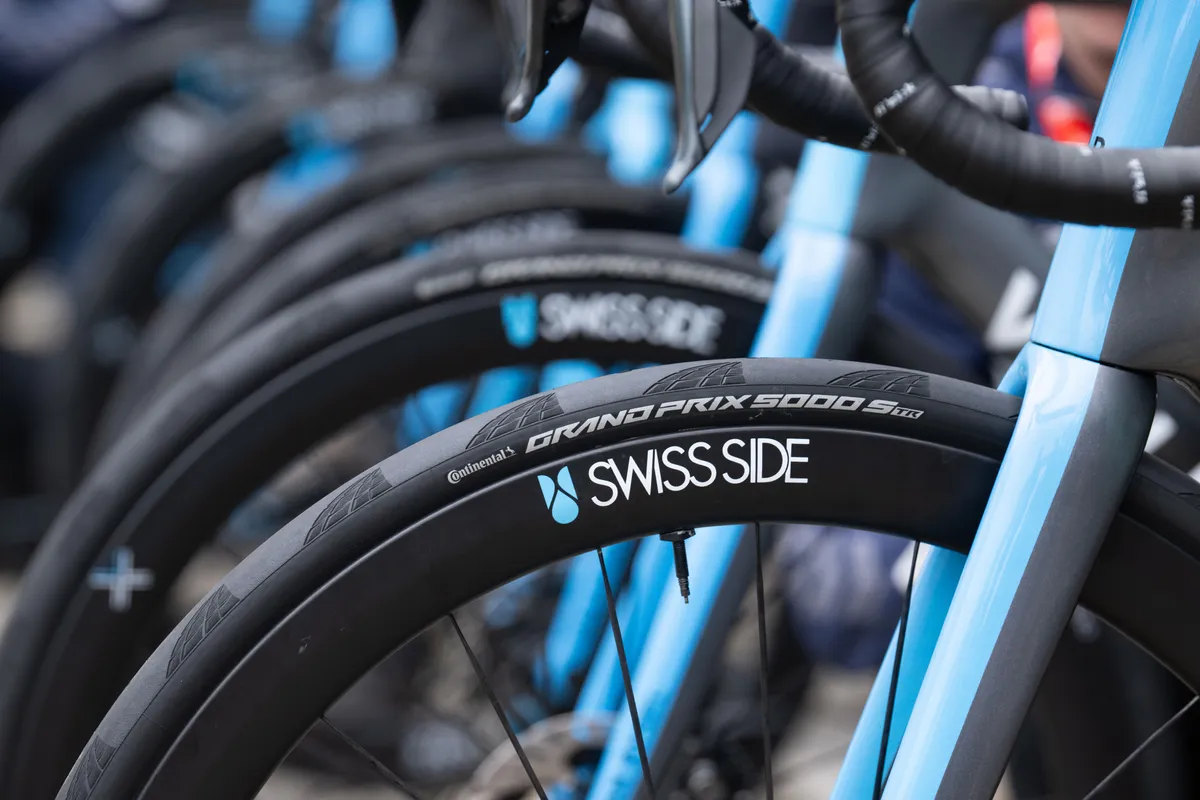
Today, with the switch to tubeless in the pro peloton, and sponsorship contracts inked in blood, FMB and Dugast (now owned by Vittoria but still producing handmade, tan-wall tyres) are no more at Paris-Roubaix.
